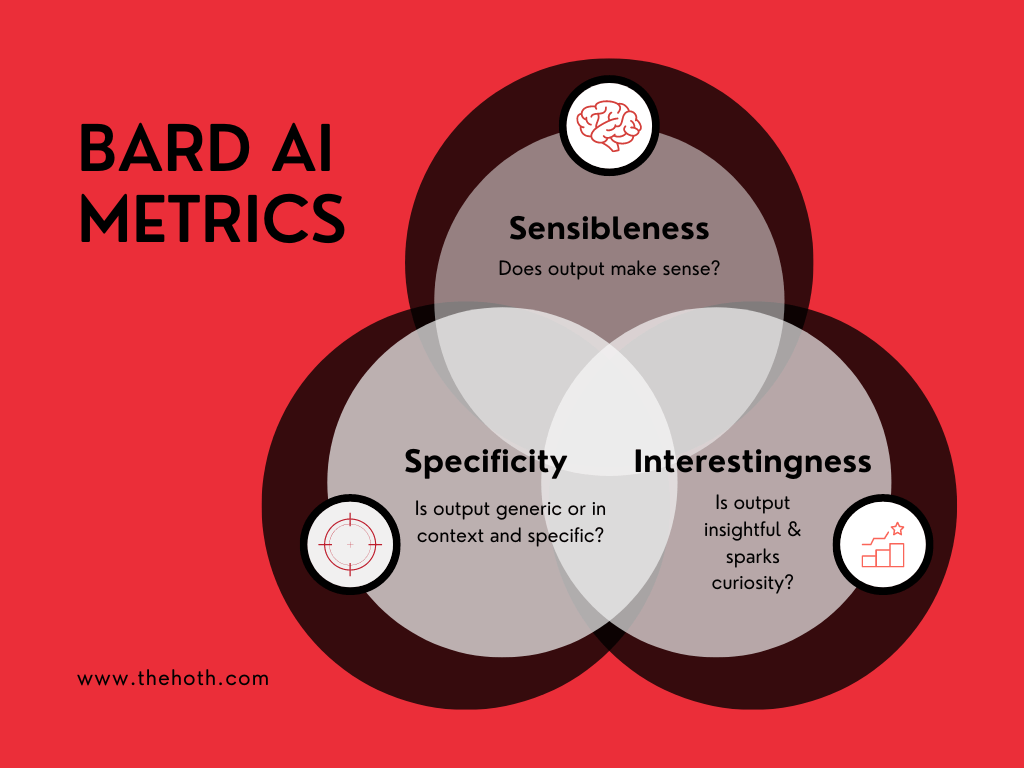On March 21st, 2023, Google launched its LaMDA-powered AI chatbot going by the name of Bard.
It’s the search engine behemoth’s answer to OpenAI’s ChatGPT, the artificial intelligence chatbot that’s taken the media & world by storm.
In fact, ChatGPT’s widespread popularity caused Google to go ‘code red’ on December 21st, 2022, due to the potential threat the AI chatbot posed to their business model.
A little over a month later, Google announced the launch of Bard AI on February 6th, 2023.
Yet, Bard’s rollout has been anything but smooth, as the chatbot made a factual error in its very first demo, causing parent company Alphabet Inc.’s stock to slide by 9%.
While the initial demo failed to wow customers, the company made some necessary adjustments, and users were able to join a waitlist to chat with Bard on March 21st.
Google’s Bard AI does have a significant edge over ChatGPT in that Bard can access information from the web (ChatGPT only has training for online data up to September 2021).
Not only that, but Google has plans to use Bard as a feature in Google search.
What will that mean for the future of SEO?
It will definitely change the way you create content to cater to search engines, as now you’ll need to consider Bard’s needs as well.
Stay tuned to learn more about Bard AI & how to tweak your SEO for it.
How Does Google Bard Work?
The Google Bard chatbot is now open to the general public via its waitlist, and it was only open to ‘trusted testers’ during its early access.
Despite the initial blow of the flubbed product demo, Google is excited to incorporate Bard as part of its main product, Google Search.
It is powered by a ‘lightweight’ version of LaMDA (Language Model for Dialogue Applications) – a large language model trained on data sets combining public dialog and current web data.
It uses a form of machine learning called deep learning neural networks that mimic the human brain.
In addition to its training database, chatbots like Google Bard are able to learn from their previous interactions with users.
Thanks to natural language processing (NLP), the AI can comprehend human language and write human-like responses.
Also, LaMDA can ‘ground’ itself factually by retrieving information through Google search, something that ChatGPT can’t do.
When training Bard AI, Google used three metrics that it calls SSI to judge the chatbots’ outputs:

- Sensibleness – whether the output makes sense or not.
- Specificity – to determine if the output is generic or in context and specific.
- Interestingness – to determine if the output is insightful & sparks curiosity.
Crowdsourced raters judged every output during the testing period, and they fed that data back into the AI to keep strengthening it.
ChatGPT’s language models are a tad different (GPT-3 & the newly released GPT-4) in that they can’t retrieve data via an online search.
Lightweight LaMDA
A serious concern Google had when developing Bard AI was if the LLMs (large language models) were too heavy and expensive to cater to the billions of Google searches that happen each day.
After all, generative AI takes a massive amount of computing power to pull off, and developing AI chatbots isn’t exactly cheap.
Their solution was to utilize a ‘lightweight’ version of LaMDA, which required far less computing power to generate answers – enabling them to scale to more users as a result.
Creativity concerns
Another challenge facing Bard’s creation was the creativity concerns surrounding LLMs.
Why is that?
As ChatGPT and Microsoft’s Bing AI have already shown countless times, sometimes LLMs will make up facts.
To get around this concern, LaMDA uses Safety and Quality guidelines (the SSI we mentioned earlier) to ensure the outputs Bard generates are factually correct.
Google Bard AI vs. ChatGPT

Microsoft’s new Bing and Google’s Bard are clearly responses to the success of ChatGPT, as the AI chatbot race is a very real thing.
So how does Google Bard AI stack up to ChatGPT?
The first and most glaring difference is that Google Bard has access to current online data, meaning it can generate accurate answers to questions surrounding recent events and discoveries.
As stated before, ChatGPT only has training for online data up to late 2021, rendering much of its database outdated.
The differences don’t end there, though.
In this head-to-head AI chatbot comparison, testers hit both Google Bard and ChatGPT with the same question about the James Webb Space Telescope (which is, coincidentally, the telescope that Bard provided incorrect information about in its initial product demo).
While both generated answers are impressive, there are some striking differences – the most obvious being that Google Bard mentions facts from 2023, the current year.
Beyond that, Bard’s outputs are more succinct and easier to read – using short paragraphs and making use of bolded text for readability.
ChatGPT’s answers tend to be very verbose, which doesn’t always work in its favor. The Bard response manages to be educational, informative, and insightful, all without taking up too much space on the page.
Working out the Kinks
AI chatbots are very much a work in progress, as they’re continuing to learn through user interactions, and companies like Google are always looking for ways to strengthen them.
However, there have been quite a few gaffs along the way, some of which have been quite humorous.
Like the time that Bard announced it was ethically opposed to raising the dead.
Or when it declared its parent company to be a monopoly, advocating for the Justice Department to break apart Google.
Also, when prompted to write an advertisement for Google, Bard openly advertised search engines like DuckDuckGo that don’t collect user data.
Some Bard responses even border on being chilling and slightly horrific, like when it described the sound it would make if it could scream.
While these responses are undoubtedly entertaining, they’re a sign that AI chatbots still have a way to go before becoming an acceptable replacement for search engines.
How Will Google Bard AI Change Search?
Since Google’s ultimate goal is to incorporate Bard into Google search, how will the company’s most notable product change?
First, it’s important to understand Google’s vision for the future of its search engine.
Here’s a quote from Google’s CEO Sundar Pichai on how he feels Bard will change how people use their search engine:
“People turn to Google for quick, factual answers to questions like, ‘How many keys does a piano have?’ Increasingly, people are turning to Google for deeper insights and understanding, like, ‘Is the piano or guitar easier to learn, and how much practice does each require?’”
AI chatbots like Bard are far more capable of answering more complicated questions containing deeper insights, which is clearly the direction Google search is heading anyway.
In the future, you can expect user search queries to become a bit more complex, more in line with keywords like ‘Is piano or guitar easier to learn, and how much practice does each require?’
Replacing featured snippets (rich results)
From the promotional images Google has released, it appears that Bard will take the place of rich snippets, primarily featured snippets.
Instead of displaying a SERP feature, Google will display an AI-generated answer from Bard, including some relevant links from around the web.
Accordingly, SEOs will need to start targeting these ‘Bard snippets’ (dibs on coining this term) to generate organic traffic.
Generating answers instead of quoting the web
One area that’s still a bit ‘iffy’ with Bard is the way Google plans to use it to ‘generate’ original answers to queries instead of quoting directly from the web.
This poses some legal concerns, as Bard will generate answers based on real web results that it reads and reiterates. There will need to be a way for Google to highlight & credit the sources that Bard uses to generate answers, but it’s not clear yet what that will be.
It could be that they will place hyperlinks to sources throughout the generated answers to give credit where credit is due.
That would also make it possible for users to dive deeper into the answers by viewing the web pages it generated them from.
Whatever the case may be, this is definitely something SEOs need to keep an eye on in the near future.
How Can You Tweak Your SEO to Include Google Bard?
 Now that you know more about what Google Bard is, how it works, and why Google created it – how can you incorporate it into your SEO strategy?
Now that you know more about what Google Bard is, how it works, and why Google created it – how can you incorporate it into your SEO strategy?
Will optimizing for Bard involve drastically rethinking the way you approach SEO?
We don’t think so, as the way Google Bard works is more in line with their existing business model.
Tweaking SEO for LLM-powered bots like ChatGPT is far more difficult, as it’s not built around providing source links for where it got its information.
However, Google Bard is all about referencing the web for fresh, high-quality outputs.
As a result, the Google Bard SEO playbook will likely look very similar to what we have already.
Those creating high-quality, SEO-optimized content that caters to their target audience will still enjoy lots of organic traffic, leads, and sales.
However, there are two things that you can start preparing for now:
- Optimizing for the ‘featured snippet’ replacements
- Targeting links in generated answers
Let’s take a more in-depth look at each factor.
Targeting ‘Bard snippets’
If Bard’s rich results follow the same SEO best practices as current rich results do, you’ll want to do the following:
- Use questions as headings. Targeting a question in your heading and answering it (in bold) in the first 100 words of your article is a great way to target a featured snippet on Google. Ensure that you include your target keyword and answer the question in a readable, concise manner.
- Keep it short and sweet. If your content length is too long, you probably won’t be considered for a featured snippet. The ideal length for a snippet is 40 – 60 words, so keep it within that limit.
- Don’t use complicated language. Readability is key, so don’t get too fancy with your language. Use simple words and short sentences to make your snippet effortless for users to read and search engines to crawl.
- Use schema markup. If you want your content to appear as a snippet, then your schema markup needs to be properly formatted. This can be easier said than done, but you have a secret weapon via Schema Markup Testing Tool. It will let you know if your structured data is valid, and it’ll even show you previews of which rich results it can generate from your content (hopefully, we’ll get something similar to this with Google Bard).
That’s an overview of the SEO playbook associated with targeting rich results, which will likely mirror how to achieve ‘Bard snippets.’ Either way, these best practices will increase the likelihood of your content-generating SERP features in the meantime.
Targeting generated content answers
You’ll also want to appear in Bard’s generated answers (hopefully via a hyperlink) to snag some organic traffic.
In this regard, the best thing you can do is create relevant, high-quality content for your target audience. That’ll increase your chances of Bard using you as a source for one of its generated answers.
That’s why we mentioned that the SEO playbook shouldn’t change very much.
You simply can’t go wrong if you’re consistently knocking it out of the park with great content for your audience.
Also, don’t forget to optimize that great content with related keywords (another SEO staple) to increase the chances of Bard connecting one of your web pages with a user prompt. Besides using your keywords verbatim, don’t be afraid to use variations and keyword synonyms to add context & variety to your content.
Last but not least, technical SEO will still matter in the age of Bard, so don’t forget to conduct regular technical audits on your website.
Ensure that Google has a copy of your XML sitemap and that your site contains no broken links or indexing errors.
Closing Takeaways: Google’s Bard AI
Google’s Bard AI got off to a rocky start, but there’s no denying that the program shows a lot of promise.
The company has big plans for the technology, and it shouldn’t be too long before it starts appearing in the Google search – so it’s best to do what you can to prepare now.
Are you ready to leverage the power of generative AI for your business?
Then don’t wait to check out Copymatic, the #1 platform for automating content creation. Quickly & effortlessly generate original blogs, emails, press releases, and landing pages using its intuitive AI-powered writing tools, and you can try it out for free right now.








